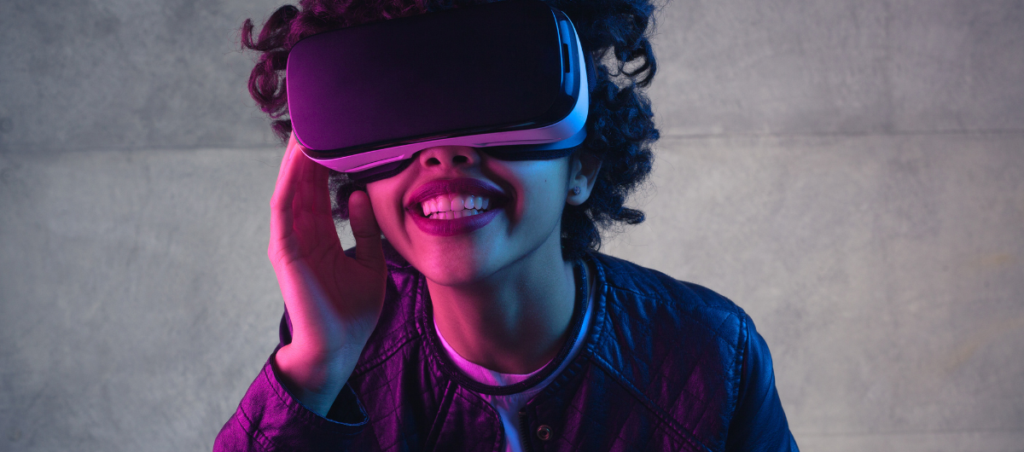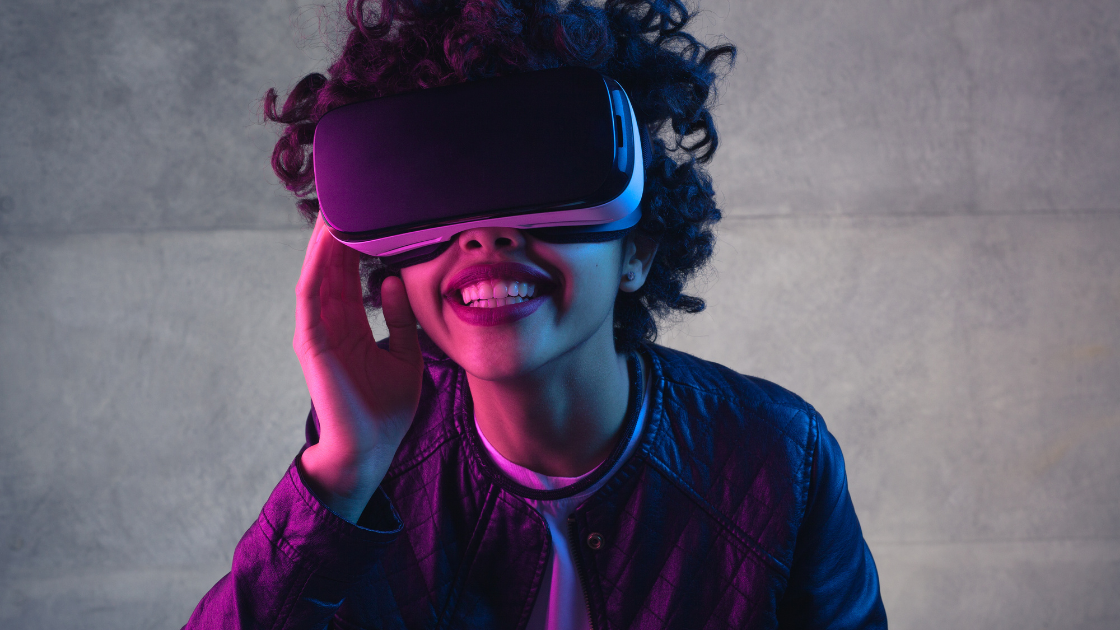According to the New York Times, the first online transaction occurred in 1994 when two friends used an early form of data encryption software to make an online sale. The item exchanged was the Sting album ‘Ten Summoner’s Tales’ for $12.48 plus shipping. (1) A lot’s changed since those fledgling days of eCommerce.
Today, global eCommerce sales make up 16% of total purchases, millennials make 60% of their purchases online, and it’s estimated that by 2040 no less than 95% of all sales will take place online. (2) So, for retailers, the future of eCommerce seems as lucrative as ‘Fields of Gold’, which, incidentally, is a track on ‘Ten Summoner’s Tales’.
To help you capitalise on the impending eCommerce boom, here are 13 trends to look out for in 2021.
Contents
- Personalised experiences
- eCommerce optimisation
- Voice commerce
- Artificial Intelligence (AI)
- Visual search
- B2B eCommerce
- Subscription services
- Omnichannel experience
- Interactive product visualisation
- Virtual reality
- Headless ecommerce
- Dynamic apps
- A faster shopping experience
- Your ecommerce goals for 2021

Personalised experiences
Shoppers love a personalised experience. In fact, 80% say they’re more likely to buy from a company that offers personalisation (3) and 48% spend more when their experience is personalised. (4) One of the most effective ways to achieve this is with personalised emails sent to customers after they’ve done something on a website, such as made a purchase or abandoned their basket.
These emails are often used to update customers on their delivery status or persuade them to return to the site and checkout by offering a special offer or discount. And it works. Retailers say implementing personalised features leads to a 20% increase in sales (5) and 52% of customers say they’ll shop elsewhere if emails aren’t personalised.
eCommerce optimisation
With between 12 million and 24 million eCommerce websites globally (6), customers are quite literally spoilt for choice when shopping online. The most successful eCommerce sites have one thing in common: they tailor the experience to the user in the following ways:
- Answer user questions (such as ‘does this site sell what I’m after?’) as quickly as possible
- Include a clear call to action so the user journey is easy to follow
- Build trust with a professional design, reviews, and testimonials
Basically, shoppers want to know they’ve come to the right place and that they’re in safe hands.

Voice commerce
If you thought today’s figures of 1.5 billion active smart speaker devices (such as Alexa, Siri or Google’s Assistant) was impressive you ain’t seen nothing yet. It’s estimated that there’ll be almost eight billion by 2023. (7) With 60% of smart speaker owners using them to make a purchase in 2019 (compared to just 9% in 2018), voice commerce is certainly a rising trend.
Another feature to consider is chatbots. These computer programs use messaging or voice command to simulate human conversation and guide customers through the sales process. 27% of consumers say they’d buy from a chatbot (8), so it’s fair to say the bot is hot in eCommerce.
Artificial Intelligence (AI)
If you’ve ever checked out a website’s ‘Customers who viewed this item also viewed’ recommendations, then you’ve experienced the power of AI in eCommerce. Personalised recommendations that provide unique homepage experiences on Amazon are generated by an algorithm they call ‘item-based collaborative filtering’. It’s estimated that this has led to a 35% increase in sales. (9) So it’s no wonder that, according to Servion Global Solutions, 95% of customer interactions will be powered by AI by 2025.
Visual search
As the name suggests, visual search is the ability to search for results based on an image rather than text. One of the leading examples of this is Pinterest’s Lens visual search technology, which can identify over 2.5 billion objects. As a result, 80% of Pinterest users start with a visual search when shopping. (10)
There’s certainly a demand for more eCommerce sites to introduce visual search. 62% of millennials want it more than any other technology (11) and 85% of shoppers put more importance on visual information than text information. (12) The future certainly looks rosy for the global visual search market – it’s expected to exceed $14,727 million by 2023.

B2B eCommerce
Although there tends to be a focus on B2C eCommerce, the market for online purchasing between businesses is actually six times bigger, valued at $12.2 trillion in 2019. (13) One of the reasons it’s a rapidly growing market is due to millennials. 73% of millennials are involved in the B2B buying process (14) and they increasingly expect the seamless eCommerce experience they’re used to as consumers. Catering for this demand for the B2B experience to echo the B2C experience will help businesses stay competitive.
Subscription services
The days of making lump-sum payments for products and services are fast becoming a thing of the past. Thanks to subscription services such as Netflix and HelloFresh, today’s consumers are increasingly accustomed to making regular (often monthly) payments on a pay-as-you-go basis. The UK’s subscription eCommerce market has grown 100% year-on-year for the past five years and is expected to grow by a further 72% by 2022. (15) The most common subscription models in order of popularity are:
- Subscription boxes: This is where companies such as HelloFresh provide regular deliveries with different contents, such as meal kits containing everything needed to create a fresh, delicious meal
- Repeat purchases: This is where customers receive a regular delivery of the same product. This could be anything from shaving equipment to beauty products
- Access models: This is where subscribing provides access to exclusive discounts or members-only perks such as free delivery

Omnichannel experience
Today’s shoppers don’t just shop on websites. 73% are what is known as omnichannel shoppers, which means they flit between multiple channels (websites, mobile apps, and social media) during their shopping journey. (16) As such, they expect a seamlessly consistent experience as they move between platforms so they can pick up where they left off.
The benefits of providing an omnichannel experience go beyond having happier customers. Research suggests that the more channels customers use when shopping results in more money being spent, more repeat purchases, and more recommendations to friends and family. (17)
Interactive product visualisation
In the absence of being able to touch and try on products, giving shoppers a 360° visualisation online helps them explore the product in more detail. 72% of consumers are more likely to buy from brands offering this service. (18)
According to Philipp Krambeer, senior managing director at Dassault Systèmes’ 3DEXCITE, this is because “it can instil a sense of ownership even before interaction with a physical product takes place.” (19) The desire for realism online is likely to see an increase of product visualisation involving technologies such as 3D rendering, augmented reality (AR), and virtual reality (VR). Which neatly brings us on to…

Virtual reality
The Harvard Business Review argued that virtual reality and augmented reality has the potential to reshape the world of retail. (20) That’s because it allows shoppers to explore virtual stores and showrooms from the comfort of their own homes. VR shoppers can:
- Explore the interior of a car and take it for a virtual test drive
- Try on a range of products in a variety of sizes and colours
- Be led through the checkout process by a virtual assistant
66% of consumers are interested in using VR to make a purchase and 35% would shop online more often if they could try products virtually. (21)
Headless eCommerce
Flexibility is the name of the game with headless eCommerce. It involves separating the customer-facing elements of a website (the front-end presentation layer or CMS) from the technical elements (the eCommerce system). Doing so gives companies the freedom to:
- Make quick changes
- Deliver content to multiple channels without restrictions
- Create a unique customer-facing experience
This flexibility is particularly vital for brands wanting to create an omnichannel experience where users can start shopping on one device and finish shopping on another channel, which is how 85% of people currently shop according to Google. (22)

Dynamic apps
It’s one thing seeing images of a model wearing the clothes you’re interested in buying, but nothing beats seeing how they’d look on you. That’s why dynamic apps are a hot trend as they allow shoppers to scan their face or body so they can virtually try on clothes anytime anywhere.
Creating these virtual dressing rooms is a great solution to cutting down on the 70% of online purchases that are returned for being the wrong size. As a result, the virtual fitting room market is expected to reach $10.75 million by 2026. (23)
A faster shopping experience
The need for speed in eCommerce has never been more in demand. At first, next day delivery was the revolutionary introduction to online shopping, but now that is making way for same-day delivery. 51% of retailers offer it already with 65% planning to in the next two years.
This demand is led by consumers. 80% of shoppers want same-day delivery, and 49% say that same-day delivery would make them more likely to shop online. (24) In other words, shoppers are more likely to choose an eCommerce site that can deliver as quickly as possible.
Your eCommerce goals for 2021
Whatever your eCommerce roadmap for 2021 might include, as experts in eCommerce website design, WooCommerce Development and marketplace websites, we’d love to help so please get in touch.
Oh, and if you like lists about future trends, then you’ll love our guide to the tech trends to look out for in 2021 (and beyond).
References
- https://www.nytimes.com/
- https://www.forbes.com
- https://us.epsilon.com/
- https://www.growcode.com
- https://monetate.com/
- https://wpforms.com/ecommerce-statistics/
- https://www.emerchantpay.com/
- https://www.growcode.com/
- http://rejoiner.com/
- https://newsroom.pinterest.com
- https://www.businesswire.com/
- https://www.openpr.com/
- https://www.forrester.com
- https://www.royalmailgroup.com
- https://www.forbes.com/
- https://hbr.org/
- https://www.forbes.com/
- https://www.ecommercetimes.com/
- https://hbr.org/2016/09
- https://supplychaingamechanger.com
- https://yourstory.com/
- https://www.globenewswire.com/
- https://www.invespcro.com

Leave a Reply